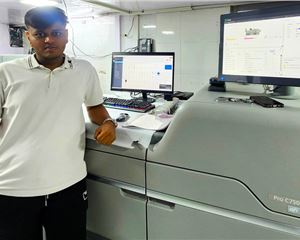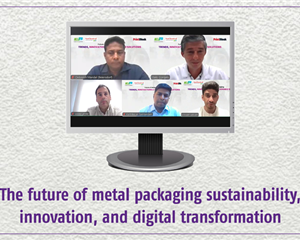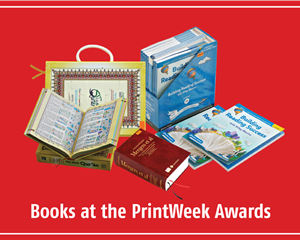Rahul Kumar interacts with an international web offset manufacturers who is looking to raise their presses’ success rate by understanding the challenges of this potential market.
Natasha Tandon of Manroland Web Systems
“India in the three biggest newspaper markets in the world and continues to grow”
With print-runs decreasing in the developed markets, hyper local and contract production is the new norm in the newspaper industry. Our finishing solutions are the only industrial scale solutions available in the world for newspapers investing in digital printing solutions for high- speed printing.
Keeping in mind production requirement, it is helpful to focus on four key factors while selecting the right press.
First, the automation of the equipment should be judiciously decided by calculating the return on investment (ROI) and the productivity benefits of these features for the pressroom. Features such as plate-loading and automatic webbing up can save precious production time.
Second, the local service support of the manufacturer should be carefully considered. While several manufacturers are selling equipment in India, not all of them offer local service support. This can thus prove to be a costly investment over the long term.
Third, the overall investment surrounding the press should be considered, especially for double-wide presses as they require intensive investments in building and related infrastructure costs, thus increasing the overall costs for the project. As an option, there are double-wide presses available in the market that can be mounted in existing pressrooms with much smaller footprints.
Fourth, the compatibility of the press with local raw materials must be tested to ensure that the overall operating costs are maintained at a low level over the long term.
With high circulation requirements, double-wide presses are ideally suited for Indian pressrooms with circulation numbers in excess of two lakh copies per night. With optimum automation levels, double-wide presses are capable of delivering double the productivity of a single-wide press, while reducing the number of towers required to one fourth in comparison. Consequently, saving on manpower, consumable costs, and electricity and space requirements.
India is among the three biggest newspaper markets in the world. With newspaper penetration in the country just under 30% of the total population, there is still tremendous scope for newspapers to grow in India. A key factor for the healthy growth of newspapers in India is the wide reach of the printed newspaper, which is still not achieved by many other media such as television or internet. The low cover price of Indian newspapers, achieved via the advertising revenues and wide circulation numbers, is another reason. Regional newspapers have registered a healthy growth over the past decade, with expansions into tier II and III cities. In printing, a growing trend is observed towards four-colour printing (all pages) and creative advertising formats to entice advertisers keen to reach the audience in these smaller cities. Several newspapers are also experimenting with UV and heatset options to increase quality levels for high impact advertising solutions.
The dominant cut-off in the Indian market has been 546mm for a very long time. Recently, however, we have observed the trend towards smaller cut-offs such as 533mm produced by some newspapers. Newer formats such as Berliner and tabloid are also becoming increasingly popular in the Indian newspaper market. This follows the trends in global markets, such as Europe and USA. The key reason behind these smaller formats is the increased paper savings in light of the accelerating costs of newsprint globally. Indian newspapers also use large quantities of imported newsprint and are affected by volatilities in newsprint prices.
In India, the internet penetration is in single digit, unlike the West. The lack of appropriate infrastructure to support digital media proves to be a bottleneck in the successful penetration of digital media in most parts of the country. However, mobile phones have rapidly expanded in numbers. Going forward, the rapid expansion of 3G and 4G networks will benefit the mobile internet sector, thus affecting the way Indians access the internet.
On the other hand, the newspaper is still widely entrenched as a powerful news and advertising medium and will continue to retain its dominance in Indian households parallel to other mediums. Increasing investment in newer technologies has improved the profitability and efficiency of Indian newspapers.
The Indian government has proposed 49% FDI for print media, which is an good development as it will encourage investments in the infrastructure of newspapers, enabling their competitiveness and long term sustainability. Emergence of contract printers is a positive development, as they allow smaller newspapers to increase their reach without investments in printing infrastructure at several sites. Contract printers often print for more than one publication at a site, thus optimally utilising the equipment and hence, offering competitive printing rates to newspapers.
Another interesting trend is the growth of hyperlocal printing sites. Lack of proper transport infrastructure makes it almost impossible to transport newspapers to smaller cities, keeping in mind the strict delivery timings. Thus, increasing number of newspapers find it economical to print locally to cater to local demand.
In the near future, there will be an increasing demand for digital printing of newspapers as it offers lower operating costs with no platemaking and other related consumable costs. Digital printing will also enable personalised advertising that can be used to launch innovative campaigns.
Manroland is focused on enhancing the current product portfolio. One major step has been the development of the Cromoman 4x1 press. In the next years, we will target to enter the entry level segment in the growing BRIC markets. This segment still constitutes a major part of the web offset printing equipment.












 See All
See All